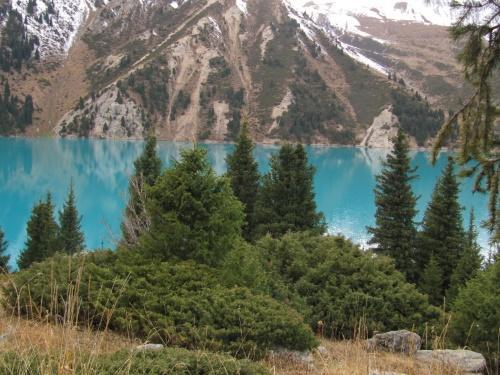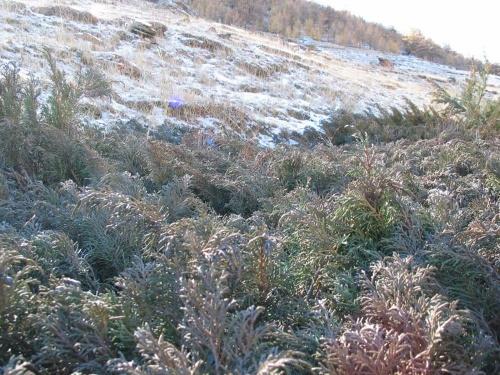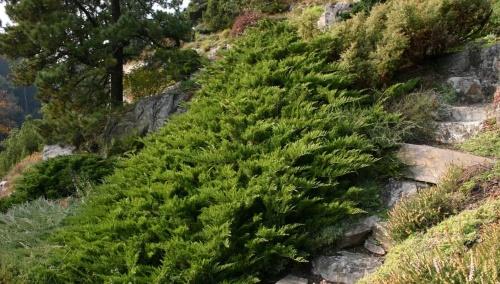Altai juniper: what is a plant
 The coniferous aroma of juniper pleasantly reminds of the beauty of the wild. Not surprisingly, over time, he "domesticated" and settled on private plots. But there is a special species among this plant - the Altai juniper. It is considered one of the most ancient, and in Altai, above all, a sacred plant. For example, juniper twigs were used for various rituals; ritual dishes were made from it. Moreover, the bush has medicinal properties and is widely used in folk medicine.
The coniferous aroma of juniper pleasantly reminds of the beauty of the wild. Not surprisingly, over time, he "domesticated" and settled on private plots. But there is a special species among this plant - the Altai juniper. It is considered one of the most ancient, and in Altai, above all, a sacred plant. For example, juniper twigs were used for various rituals; ritual dishes were made from it. Moreover, the bush has medicinal properties and is widely used in folk medicine.
Altai juniper: what is culture

- Cossack;
- false Cossack;
- Siberian.
Like all conifers, these plants are rich in nutrients. Due to this, they are actively used in traditional medicine. But the Siberian juniper is recognized as the most medicinal of the three. The other two types of recognition in official medicine have not been found.
Cossack juniper
 It grows as a low shrub, the height of which does not exceed 1 m. The branches can be erect, but most often they spread. The gray-brown bark on them cracks over time. Shoots are densely covered with small pointed leaves in the form of an ellipse. They overlap each other and partially grow together with the branch. For their location, the plant is referred to as scaly junipers.
It grows as a low shrub, the height of which does not exceed 1 m. The branches can be erect, but most often they spread. The gray-brown bark on them cracks over time. Shoots are densely covered with small pointed leaves in the form of an ellipse. They overlap each other and partially grow together with the branch. For their location, the plant is referred to as scaly junipers.
Juniper Cossack is a very poisonous plant (it contains sabinol oil).
You can meet this variety most often in mountainous steppe regions, on the slopes of mountains and cliffs.
Pseudo-Cossack Juniper
 The plant has a lot in common with the Cossack juniper. The bush is also compact, but with creeping branches that branch strongly. The species differs from the Cossack juniper in the shape of its leaves. They are close to the shoot, much wider and with a blunt end. But the needles in general are also arranged crosswise, in pairs, like the laid tiles.
The plant has a lot in common with the Cossack juniper. The bush is also compact, but with creeping branches that branch strongly. The species differs from the Cossack juniper in the shape of its leaves. They are close to the shoot, much wider and with a blunt end. But the needles in general are also arranged crosswise, in pairs, like the laid tiles.
Siberian juniper
 Formerly belonged to a species called common juniper. However, today the plant stands out as a separate crop. It grows as a rather large shrub up to 3 m high, and its branches spread on the ground. The shoots are covered with gray-brown bark and hard, sharp leaves that are curved like a sickle. In their structure, the needles are similar to the needles of spruce or fir. Fruiting in small cones-berries of black color with a bluish bloom.
Formerly belonged to a species called common juniper. However, today the plant stands out as a separate crop. It grows as a rather large shrub up to 3 m high, and its branches spread on the ground. The shoots are covered with gray-brown bark and hard, sharp leaves that are curved like a sickle. In their structure, the needles are similar to the needles of spruce or fir. Fruiting in small cones-berries of black color with a bluish bloom.
Common juniper grows in the steppe part of Siberia. In contrast, the Siberian prefers Gorny Altai and rocky mountain slopes. Sitting on a rocky cornice, the bush hangs beautifully its evergreen shoots.
Siberian juniper is often used in folk medicine. The plant helps with bronchitis and tuberculosis, gout, scurvy, joint and many other diseases.